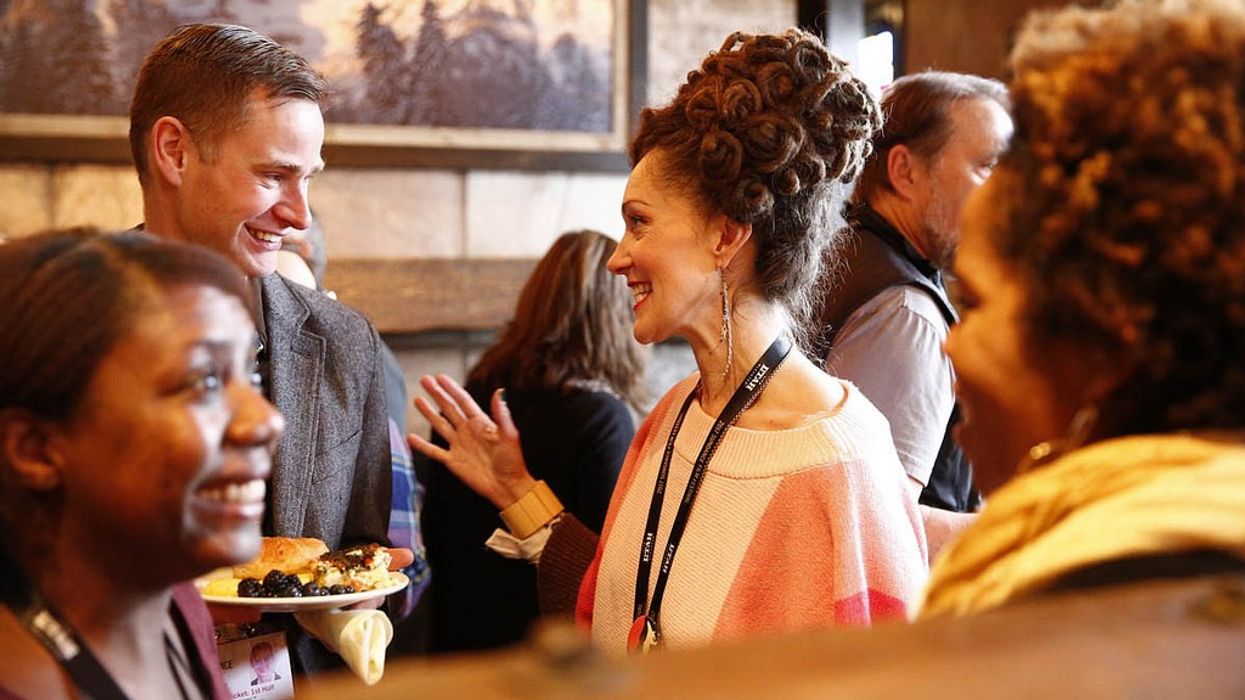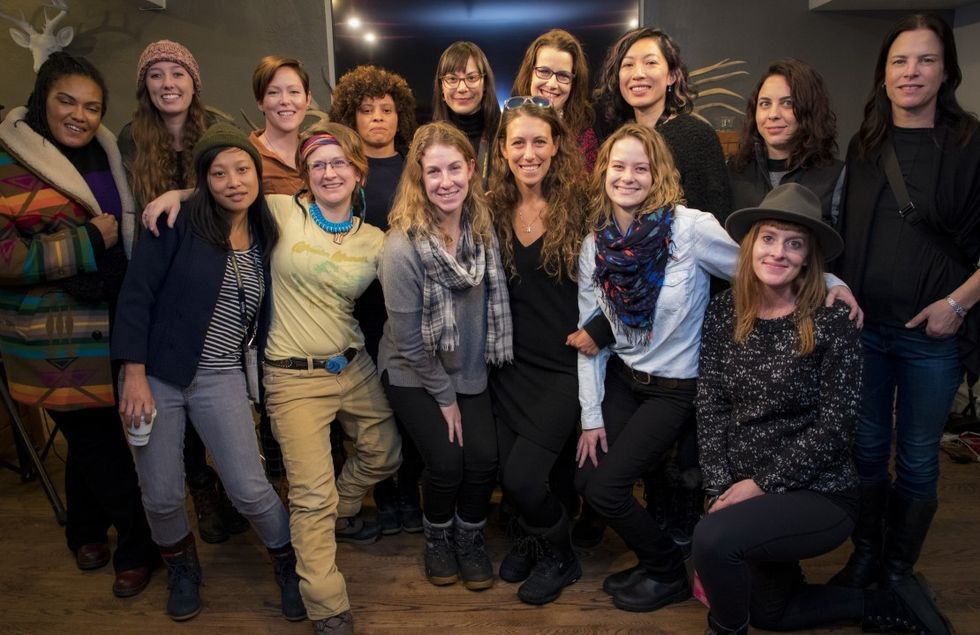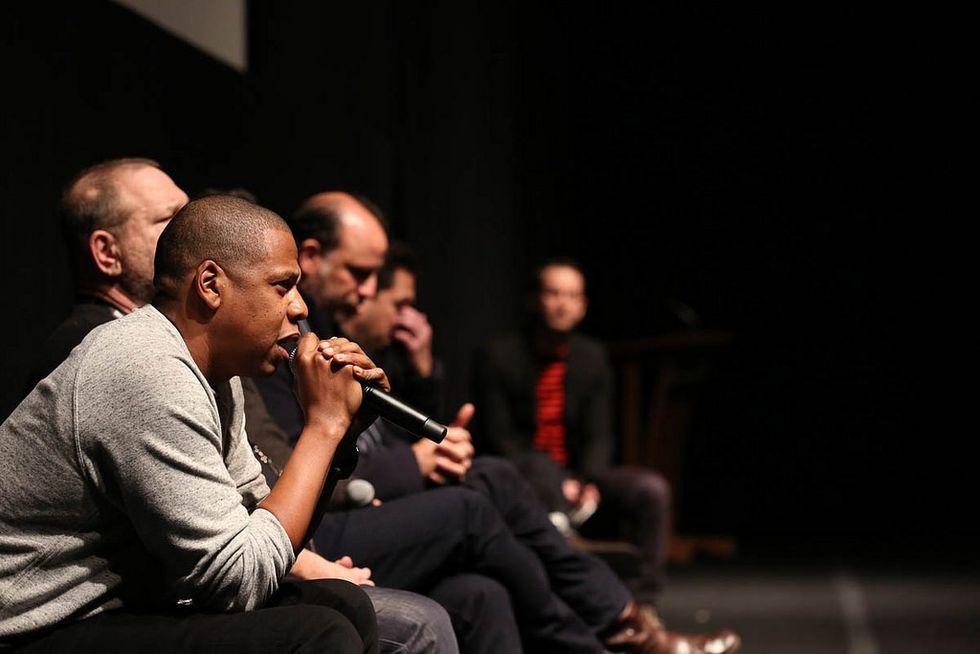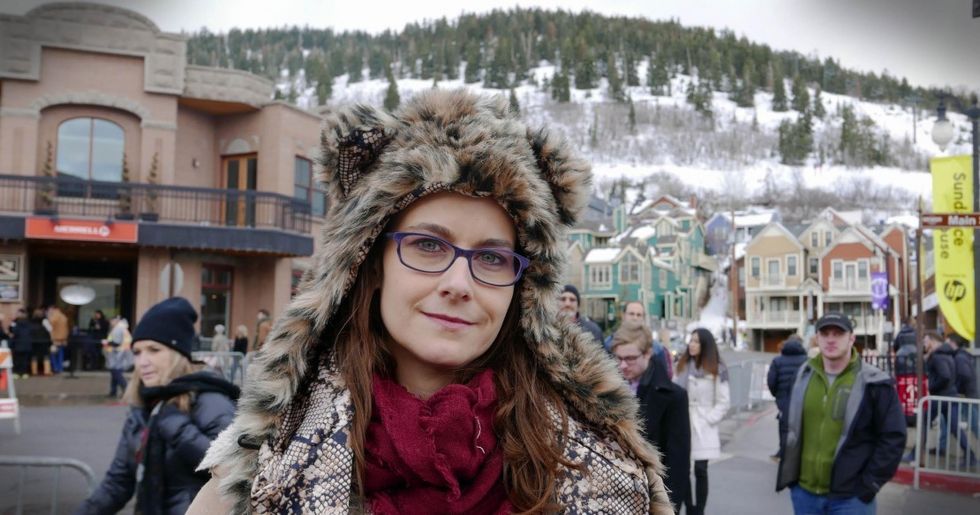DP Jendra Jarnagin Gives Tips For Attending Sundance
DP Jendra Jarnagin often turns her time at Sundance into paid gigs. Here's how.

The Sundance Film Festival has wrapped another year, and, if you weren’t in Park City this time around, you may be asking yourself: should I go next year? It’s a big investment, especially if you don’t have a film in the festival, but it is a great time to see friends and movies and go to cool parties.
Even more important is the opportunity to turn this swell time in the snowy Utah mountains into professional advantages and jobs. But how is this accomplished? No Film School turned to Jendra Jarnagin, a cinematographer who has been attending Sundance for over ten years, for advice that can apply to Sundance and almost any film festival that you might want to attend.
It’s like a movie: Sundance is made in prep.
The first few times Jarnagin attended the festival, the biggest jobs she shot in the subsequent years came as direct results of meeting people at Sundance. “I can pretty much point a lot of my career success back to Sundance and relationships I’ve made out here,” Jarnagin shares, “especially my LA connections.”
“This year I got booked for a job over the first Sundance weekend, so I am leaving Utah and flying back on a red eye to New York and going straight to work,” Jarnagin tells us. Despite costs associated with changing travel, Jarnagin considers the time she puts into attending and planning the festival to be highly beneficial in terms of return on investment.
Below are seven tips to get the most from your trip to Sundance, pulled directly from Jarnagin’s decade of experience.

1. Know what you want to get out of the festival
There are a number of different Sundance experiences. You may have a script and you are looking to find potential producers and funding. You may be excited about a week of avid moviegoing and possible inspiration. Maybe, you want to dance all night, or get up early to ski. You may have a skill and be looking to increase your network with an eye towards future collaborations.
It’s like a movie: Sundance is made in prep. Do your homework, know what you want before you get to the festival, and be focused. Have a plan. Jarnagin puts over 100 hours of prep into the festival, and her Google calendar during the festival is jam-packed and color-coded.
If your goal is networking, reach out to friends and acquaintances who are going, and ask if there are parties you could attend. Seek out vendors or manufacturers who may have a space or events at Sundance. Ask collaborators if there are people they think you should meet.
Let your friends know your intentions so they can help and make introductions that support those goals, and be sure to return the favor. For example, if your screenwriter friend is looking to get into horror writing and you meet the programmer of a horror festival, you can make an introduction and let them take it from there.
The fact you’ve come to Sundance legitimizes you enough that you are worth talking to.
2. Be open
“There’s a great openness at Sundance,” Jarnagin shares. “More than 40,000 people are taking over a small town and it lends a great sense of community that you don’t find at other festivals, or in NYC or LA. Everyone is extremely accessible here.”
There’s a lift on the barrier of proving yourself; the fact you’ve come to Sundance legitimizes you enough that you are worth talking to. Jump into strangers’ conversations in the grocery store, or in line for the bus, or with the couple seated next to you in the theatre.

3. It’s a marathon, not a sprint
Take care of yourself. Drink water. Eat. Support your immune system. Go to bed at a reasonable hour so you can jump back in the game in the morning. If you came to network, maybe don’t stay out dancing with the fun Mormons you met ‘til 5 AM.
Particularly at Sundance, the altitude takes a toll, and you can easily become dehydrated and fatigued. Often folks become sleep-deprived and immune systems suffer. There is finger food everywhere, but Jarnagin suggests to bring solid food along with you: peanut butter sandwiches and hard-boiled eggs are her go-to choices. It is often hard to get a reservation at a restaurant—and it takes time.
Jarnagin always carries self-care supplies in her sparkly blue day bag, including snacks, bottled water, a thermos of coffee, chocolate covered espresso beans (for when she wants caffeine but not liquid), hand and toe warmers, and extra layers.
4. Bring business cards
People have different approaches, but in Jarnagin’s case, if she enters a number in her phone, she won’t recall who that person is in a week—and the most important thing about collecting business cards is following up.
Pro tip: write notes on the back of the business card, such as where you met and what you talked about, so that you have references when you follow up. Do it that evening while you still recall the conversation.
And bring a lot of cards so you don’t have to be stingy. Jarnagin can go through a hundred cards in a few days when the panels and introductions and parties and cocktail hours are flowing.
The most important thing about collecting business cards is following up.
5. Make time for follow-ups
“If there is a stack of 200 business cards, pick who you think is most beneficial to stay in touch with,” Jarnagin says. “Or even if you don’t think they are beneficial, but you had a connection and you just like them, I found over time that’s more important.”
Allow some time after the festival and reach out to the people who you want to follow up with.
Pro tip: Keep a spreadsheet, and know who you want to touch base with every few months.
“If you don’t do any follow-up, then all the time, effort and money you spent coming here is a waste,” Jarnagin confides. “Compared to the potential you could get out of coming, you probably cut it off by 90% if you don’t stay in touch, and I have gotten to know people better by staying in touch with them over the course of the year by reaching out, mostly on Facebook.”
"You aren’t here to try and get people to hire you; you are here to make new friends—and down the line that leads to people hiring you and referring you for things."
6. Networking is all about genuine connections
People want to hire people they know. You can’t just throw around business cards. It’s a balance of having a real connection, and also not spending all your time at the party talking to the fellow who was also a Destiny’s Child groupie in the ‘90s. Once you establish that you’ll follow up later, it might be time to start working the room. That said, we’re all human and like connection, so feel free to wax nostalgic about that one show for a while if you are enjoying yourself.
The balancing act to get to a real and not-too-time-consuming connection is a delicate one. Case in point: a fellow on the shuttle bus last night overheard my friend tell me that she was casting a show, and he butted in with “That show sounds amazing!!” and offered a business card in case she ever needed help in production—although she had said nothing about the content of the show other than that it was casting. She has that guy’s business card and she couldn’t care less.

Some people may think of networking as intimidating or fake and self-serving and therefore negative—and that’s the wrong attitude. It is great to touch base and meet other people doing interesting things, and perhaps you’ll be able to collaborate or help each other in the future. Almost everyone else at the party is there with the same intention.
“If your approach is negative, then you need to reframe your thinking,” Jarnagin says. “You aren’t here to try and get people to hire you; you are here to make new friends—and down the line that leads to people hiring you and referring you for things.”
Jarnagin also spends her time at Sundance maintaining existing connections and seeing friends from LA and elsewhere.
7. Be generous and appreciate community
Jarnagin is known as being a good networker, and friends reach out to her when they are considering heading out to Sundance for the first time.
“Every year I spend about an hour on the phone with several individuals giving them a primer,” Jarnagin says. She shares party invites with friends, and, in return, those friends often share invitations with her.
Be generous with your time and information and help folks, and appreciate that we are all a shifting group of people who likely have similar goals, and the more we can support each other the better. Take that to heart!
"Nothing I do all year long pays off like coming to Sundance festivals."
A few more tips
The long story short is: Be friendly and open and you’ll learn a ton about how the industry works and meet a lot of people. Be organized and have a plan beforehand, but once out in the snow, stay flexible and spontaneous—head back to a house party or to a dinner with new friends.
Some final Sundance-specific tips:
- If you don’t have movie tickets, waitlist movies with larger theatres, as more spots will be available. And ask people on the shuttle bus if they have extras for you!
- It doesn’t matter if you are a Sundance newbie and have no invitations to parties. You can meet people everywhere. You can make a valuable connection at a coffee shop or condo party. The Sundance website is full of events.
- Go to panels to meet the panelists.
- Walk down Main Street and pay attention—don’t have your head in your phone! Say hello to folks.
“You’ll be surprised who you meet,” Jarnagin says. “Nothing I do all year long pays off like coming to Sundance festivals.”
For more, see our complete coverage of the 2017 Sundance Film Festival.
Featured image: Greg Boustead of the Simons Foundation and Sundance Institute Director of Foundation and Government Giving Elizabeth Greenway attend the Sundance Institute Foundations Brunch during the 2017 Sundance Film Festival. © 2017 Sundance Institute | photo by Ryan Kobane.
- Submissions Open For the 2024 Cassian Elwes Independent Screenwriting Fellowship ›
- The 6 Best Film Festivals That You Should Attend ›
- What is Sundance Actually Like? A First Timer's Journey Begins ›
- 'Birth/Rebirth' Writers and Director on Making the Film ›












